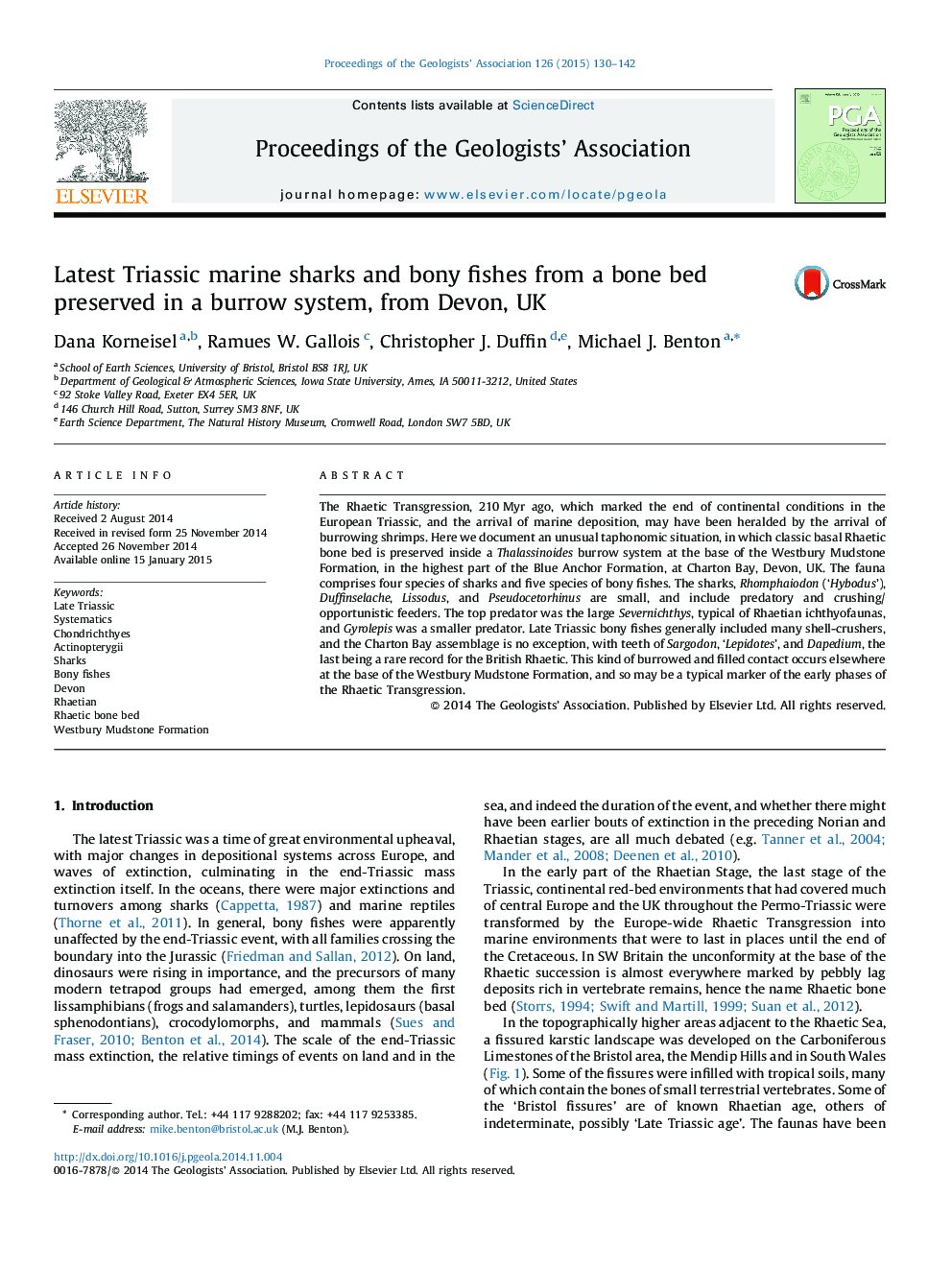| Article ID | Journal | Published Year | Pages | File Type |
|---|---|---|---|---|
| 4734720 | Proceedings of the Geologists' Association | 2015 | 13 Pages |
The Rhaetic Transgression, 210 Myr ago, which marked the end of continental conditions in the European Triassic, and the arrival of marine deposition, may have been heralded by the arrival of burrowing shrimps. Here we document an unusual taphonomic situation, in which classic basal Rhaetic bone bed is preserved inside a Thalassinoides burrow system at the base of the Westbury Mudstone Formation, in the highest part of the Blue Anchor Formation, at Charton Bay, Devon, UK. The fauna comprises four species of sharks and five species of bony fishes. The sharks, Rhomphaiodon (‘Hybodus’), Duffinselache, Lissodus, and Pseudocetorhinus are small, and include predatory and crushing/opportunistic feeders. The top predator was the large Severnichthys, typical of Rhaetian ichthyofaunas, and Gyrolepis was a smaller predator. Late Triassic bony fishes generally included many shell-crushers, and the Charton Bay assemblage is no exception, with teeth of Sargodon, ‘Lepidotes’, and Dapedium, the last being a rare record for the British Rhaetic. This kind of burrowed and filled contact occurs elsewhere at the base of the Westbury Mudstone Formation, and so may be a typical marker of the early phases of the Rhaetic Transgression.
